INTERNACIONAL
The losers and winners of Trump’s ‘Liberation Day’ tariff plan

President Donald Trump unveiled his latest tariff plan last week on «Liberation Day,» which the administration said will restore the American Dream and spark an economic boon for U.S. workers.
«American steel workers, auto workers, farmers and skilled craftsmen,» Trump said from the White House Rose Garden last Wednesday afternoon in his announcement. «We have a lot of them here with us today. They really suffered, gravely. They watched in anguish as foreign leaders have stolen our jobs, foreign cheaters have ransacked our factories, and foreign scavengers have torn apart our once-beautiful American dream. We had an American dream that you don’t hear so much about. You did four years ago, and you are now. But you don’t too often.»
«Now it’s our turn to prosper, and in so doing, use trillions and trillions of dollars to reduce our taxes and pay down our national debt,» he continued. «And it will all happen very quickly. With today’s action, we are finally going to be able to make America great again, greater than ever before. Jobs and factories will come roaring back into our country, and you see it happening already. We will supercharge our domestic industrial base.»
The Trump administration’s tariff plan leveled a baseline tariff of 10% on all imports to the U.S., while customized tariffs were set for countries that have higher tariffs in place on American goods. The baseline tariffs of 10% took effect on Saturday, while the other tariffs will take effect on April 9.
HOW WE GOT TO LIBERATION DAY: A LOOK AT TRUMP’S PAST COMMENTS ON TARIFFS
President Donald Trump holds a chart as he delivers remarks on reciprocal tariffs during an event in the Rose Garden at the White House on April 2, 2025. (Brendan Smialowski/AFP via Getty Images)
Trump pointed to the European Union during his announcement, and explained the U.S. will charge the EU a 20% tariff, compared to its 39% tariffs on the U.S. Japan will see 24% tariffs, compared to the 46% the country charges the U.S., while China will be hit with a 34% tariff, compared to the 67% it charges the U.S.
The customized tariffs, Trump explained, would not be full reciprocal tariffs, as his administration was «very kind» and leveled tariffs that are roughly half of what a particular nation was charging the U.S. on tariffs.
«For nations that treat us badly, we will calculate the combined rate of all their tariffs, nonmonetary barriers and other forms of cheating,» Trump said Wednesday.
HERE’S WHAT TRUMP IS REALLY UP TO WITH HIGH-STAKES TARIFF GAMBIT
«And because we are being very kind, we will charge them approximately half of what they are and have been charging us,» he said. «So, the tariffs will be not a full reciprocal. I could have done that. Yes. But it would have been tough for a lot of countries.»
Fox News Digital examined the full tariff list and spoke to experts about who stands to lose the most due to the tariffs, and who will likely benefit and tackle the new tariffs victoriously.
LOSERS
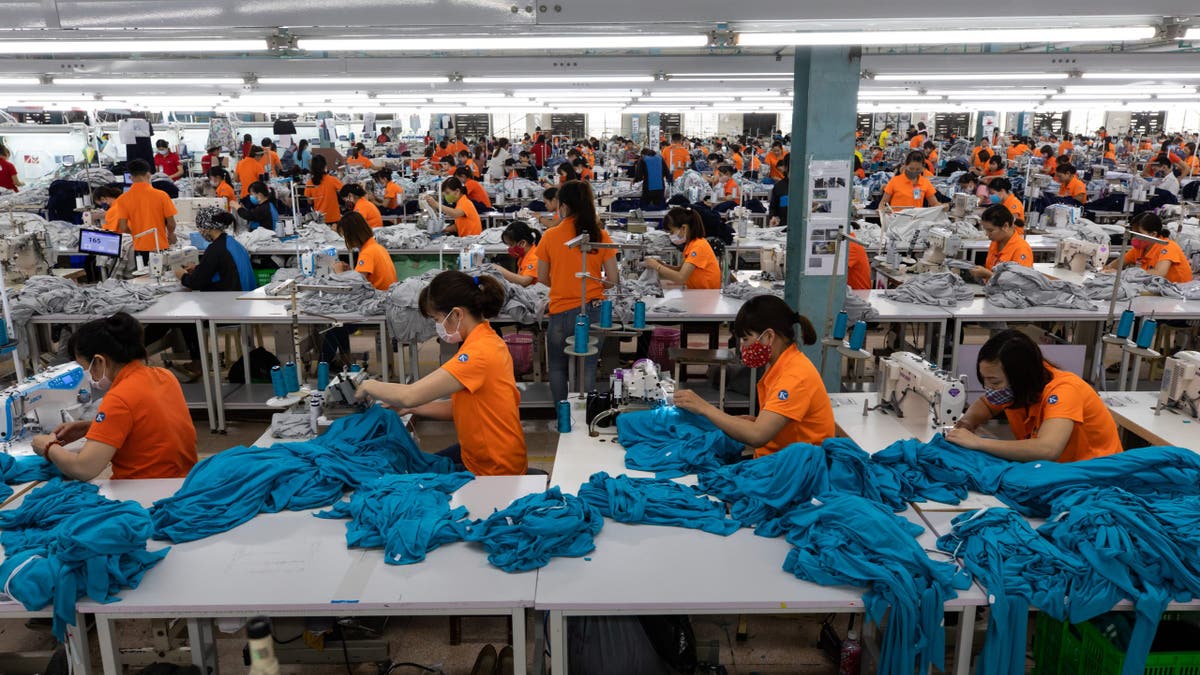
Employees use sewing machines at the Pan-Pacific Co. Viet Pacific Clothing (VPC) factory in Vo Cuong, Vietnam, on March 1, 2019. (SeongJoon Cho/Bloomberg via Getty Images)
Fox News Digital spoke with Samir Kapadia, a managing principal at the lobbying and advisory firm the Vogel Group, who explained Vietnam will likely lose the most business due to the upcoming tariffs.
VIETNAM
«Vietnam has long been an amicable trade partner with the United States for a variety of sectors, whether that would be textiles and apparel or computers and consumer electronics, but there has been a gross inequity in the bilateral trade relationship. Vietnam simply doesn’t have the economy or the resources to import from the United States and to… provide that reciprocity,» Kapadia explained.
Vietnam charges the U.S. a 90% tariff on imported goods to the nation. The Trump administration last week announced the Southeast Asian country will face a 46% tariff on goods imported to the U.S.
Vietnam’s industries are also deeply rooted in Chinese business investments, Kapadia said.
MUSK SAYS HE HOPES FOR ‘ZERO TARIFFS,’ FREEDOM OF TRADE ZONE BETWEEN US AND EUROPE
«To add insult to injury, they also have been a hot bed for Chinese investment. Since the imposition of the Section 301 tariffs under the first Trump administration, which were these large-scale tariffs on Chinese imports, you had a whole number of Chinese companies across a variety of industries in the consumer product segment basically invest, instead, in factories in Vietnam as a way to circumvent paying tariffs, so the Chinese would keep their market share, but just go and make it in another country,» he explained.
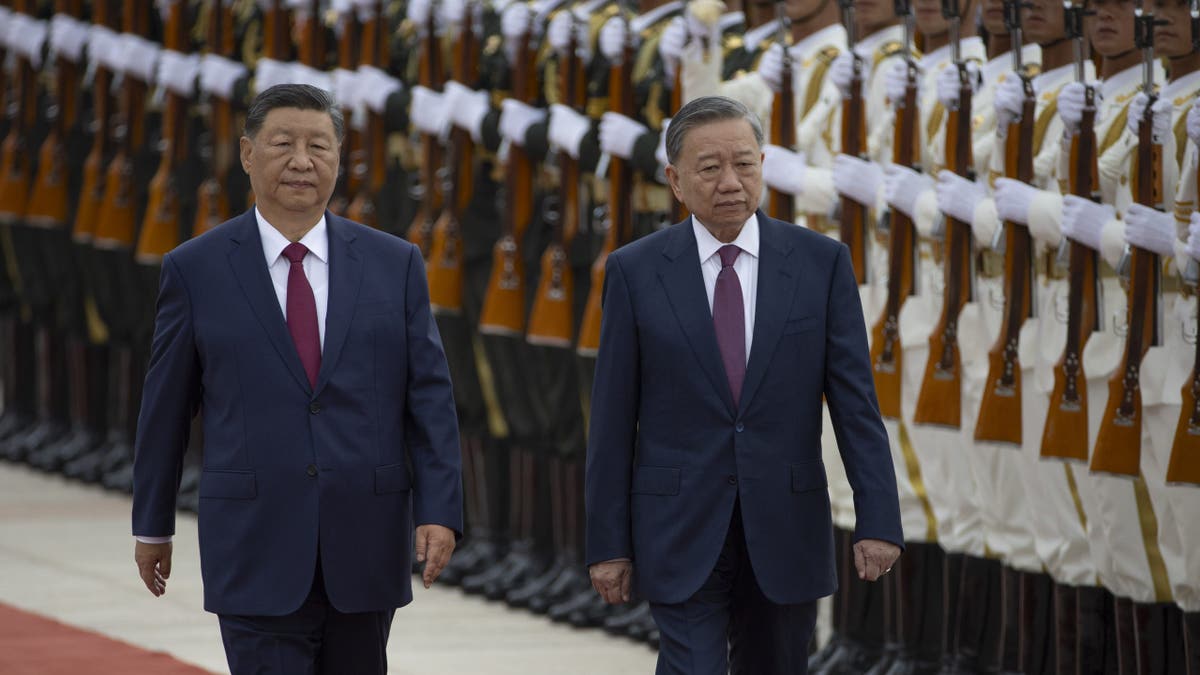
Chinese President Xi Jinping, left, and Vietnam President To Lam pass by an honor guard at a welcoming ceremony at the Great Hall of the People on Aug. 19, 2024 in Beijing. (Andres Martinez Casares-Pool/Getty Images)
Trump signed a memo under Section 301 of the Trade Act of 1974 in 2018 under his first administration targeting Chinese goods for U.S. tariffs in response to Chinese theft of American intellectual property, Trump said at the time.
«This was by far the worst day for the Vietnamese government, in the sense, they’re realizing that that door has now closed. A 46% tariff – Vietnam is not an attractive country to import from. The numbers won’t work,» Kapadia said of the new rounds of tariffs targeting Vietnam.
The Asian nation has already felt the pinch, and called on Trump to delay the tariffs from taking effect this weekend.
AFTER TRUMP TARIFFS, JPMORGAN RAISES CHANCE OF RECESSION TO 60%
Vietnam’s leader To Lam wrote a letter to Trump on Saturday, the New York Times reported, asking him to delay the imposition of the tariffs for at least 45 days and for the pair of world leaders to meet in Washington, D.C., in May «to jointly come to an agreement on this important matter, for the benefit of both our peoples and to contribute to peace, stability and development in the region and the world.»
CHINA
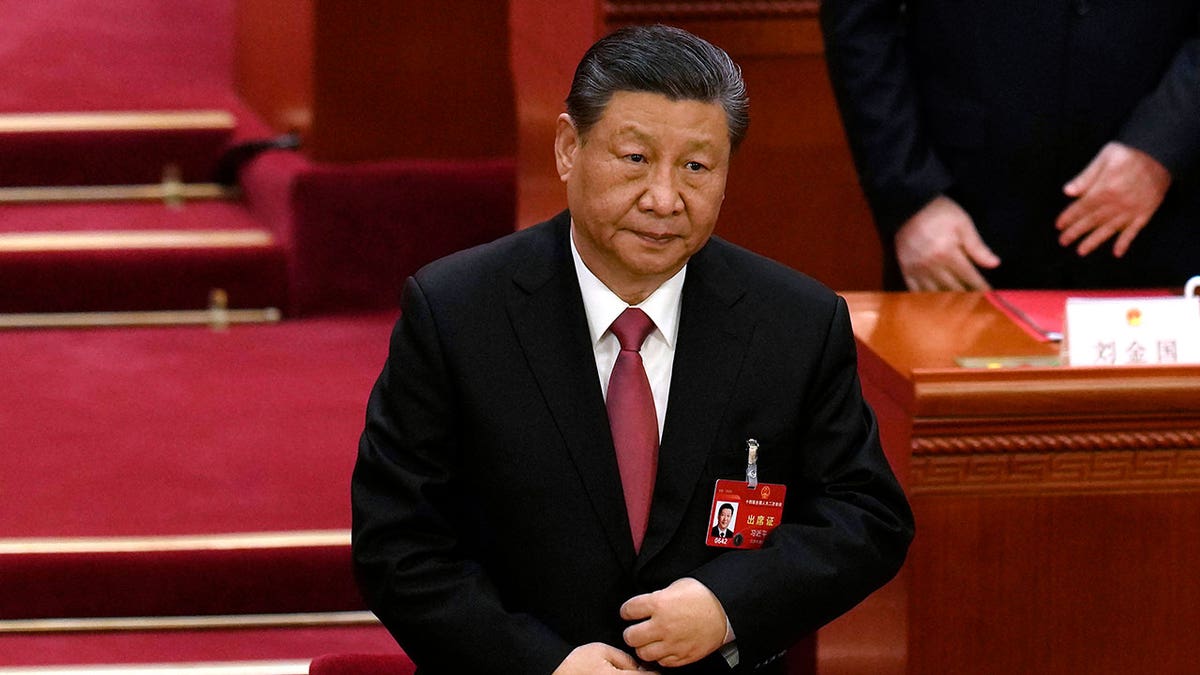
Chinese President Xi Jinping stands at the closing session of the National People’s Congress in Beijing, March 11, 2024. (AP Photo/Ng Han Guan)
The «biggest losers» from Trump’s Wednesday announcement are «without question» China and Vietnam, Kapadia said.
China was hit with a 34% tariff as part of Trump’s announcement last week, which is in addition to previous tariffs leveled on the nation. Kappadia said the newest upcoming tariff and the «high-band» tariffs of 45% on some Chinese goods puts the country’s tariff barrier at about 75% to 80%, which Kapadia predicted could grow to 150% by the end of 2025.
«That’s because there’s just a lot of ongoing challenges with China that have not begun to kind of roll-out or get resolved, and ultimately the United States is going to have to continue to pressure U.S. companies to invest more in the United States, and the only way to do that is to continue to put pressure on China,» Kapadia said.
The trade expert continued that other nations, particularly European export sectors, could also see fallout from the tariff plan in regard to luxury products or household purchases, but that it’s too early to predict where the chips will fall with Europe.
«I think that that might resolve itself over time, depending upon how the Europeans behave. From what we’ve seen, just early next week, we’re going to have some dignitaries and officials from Europe come and visit the president to negotiate on a potential resolution. All in the meanwhile, they are threatening a retaliatory 20% tariff to kind of make this tit-for-tat based on the reciprocal tariff announcement, but we know from the president that all that’s going to do is turn the 20% that we put on Europe to 40%,» he said.
WINNERS
Kapadia pointed to India and Japan as the two nations that will benefit from Trump’s tariff plan last week.
HERE’S A CLOSER LOOK AT TRUMP’S TARIFF PLAN: WHAT TO KNOW ABOUT THE NEW DUTIES
«We have seen both the Japanese head of state and the Indian head of state come to Washington and provide the president with opportunities where they would then reduce their own tariff barriers,» he said.
«Just a week before this announcement, Prime Minister Modi came out and provided a whole list to the government… that says, ‘Here are all the things that I’m going to reduce, in terms of tariffs of U.S. exports to India’ And so I think that’s going to continue. And I think that they’re going to make headway at getting toward more equitable trade between the two countries,» he added.
INDIA and JAPAN
Trump unveiled a 27% tariff on India on «Liberation Day» and a 24% tariff on Japan.

President Donald Trump and India’s Prime Minister Narendra Modi shake hands during a news conference in the East Room of the White House, Feb. 13, 2025. (Photo/Alex Brandon)
«I think that they’re going to make headway at getting toward more equitable trade between the two countries, whether that’s India and the U.S. or Japan and the U.S., and honestly serves to the U.S.’ benefit to rectify some of those tariff barriers with India,» he said. «It is the largest democratic country in the world, and they are strategic ally for geopolitical reasons and a number of other considerations. And so they’re going to be a country that I think we have to watch and really see how they negotiate their way through this new tariff regime.»
Kapadia pointed to a handful of U.S. companies that operate in India, such as Lego, Apple and Goldman Sachs, and predicted companies that have made large-scale investments in India will likely stay there, while they will likely move other overseas operations in nations facing even higher tariffs, such as Vietnam, to India.
TRUMP TOUTS RETURN OF ‘AMERICAN DREAM’ IN HISTORIC TARIFF ANNOUNCEMENT
«You name it, a whole slew of U.S. companies have made concerted, large-scale investments in India. I think that they’re going to stick to them. I think they’re going to grow there. And if you look at the difference, just on our arbitrage basis, 46% versus 26% – that’s a big Delta. So if you’re Apple, and you’re making Apple technology, Apple-related products in Vietnam, and you’re importing at 46%, or you’re making it in India at 26%, you’re obviously going to double down on your India effort,» he said.
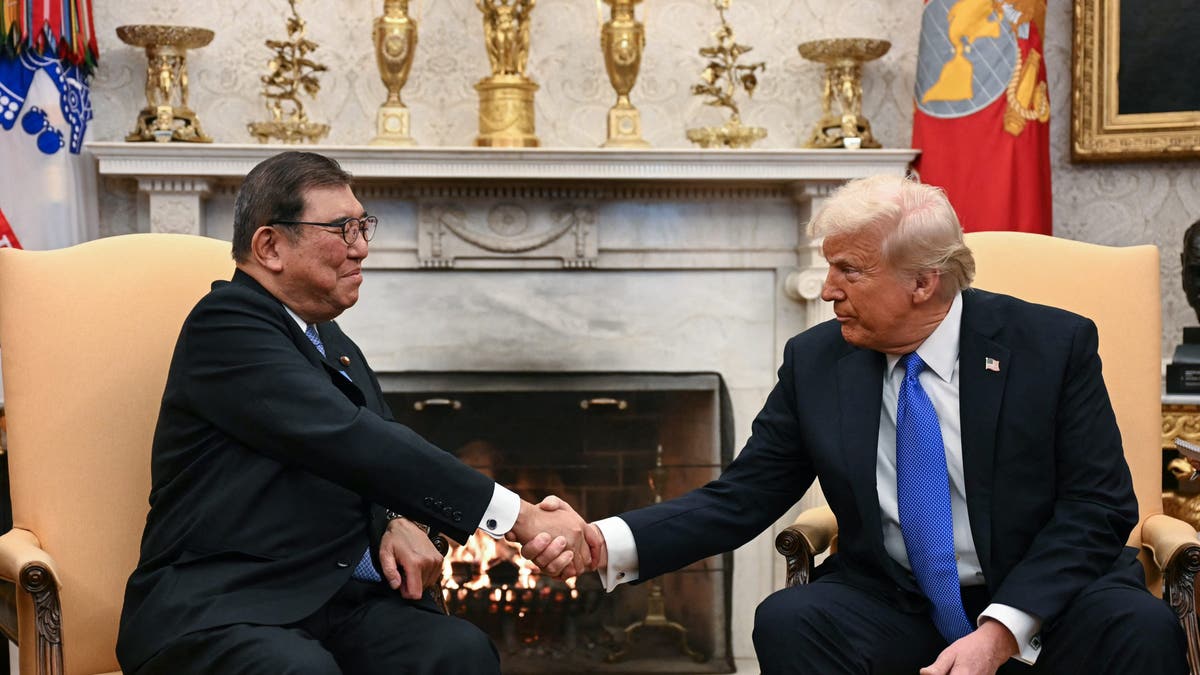
President Donald Trump shakes hands with Japanese Prime Minister Shigeru Ishiba in the Oval Office of the White House on Feb. 7, 2025. (Jim Watson/AFP via Getty Images)
Kapadia continued that Trump’s latest tariff policies target corporate America, which opens the doors to which industries will move back to U.S. soil to avoid the tariffs. He pointed to «critical industries» such as semiconductor manufacturing, critical minerals, aluminum and steel manufacturing delivering large-scale investments in the U.S. both this year and next year, to increase capacity and production «out of necessity.» He noted that Trump’s customized reciprocal tariffs are not stackable with existing tariffs on certain industry imports, such as steel and aluminum.
HERE’S WHAT HAPPENED DURING TRUMP’S 11TH WEEK IN OFFICE
«That’s going to be the opportunity for the jobs to be created, for the investment to happen. Whereas on the multilateral kind of, ‘Hey, here’s our new kind of blended rate for these 60 odd countries,’ that’s just going to be finding more equity with a foreign direct investment from those countries,» he said.
U.S. WORKERS
In America’s Rust Belt, which stretches from Illinois to upstate New York, critical industries are ramping up production under the second Trump administration and locals are excited after decades of old industrial towns economically suffering, Ohio Republican Rep. Michael Rulli told Fox News Digital in an exclusive Zoom interview.
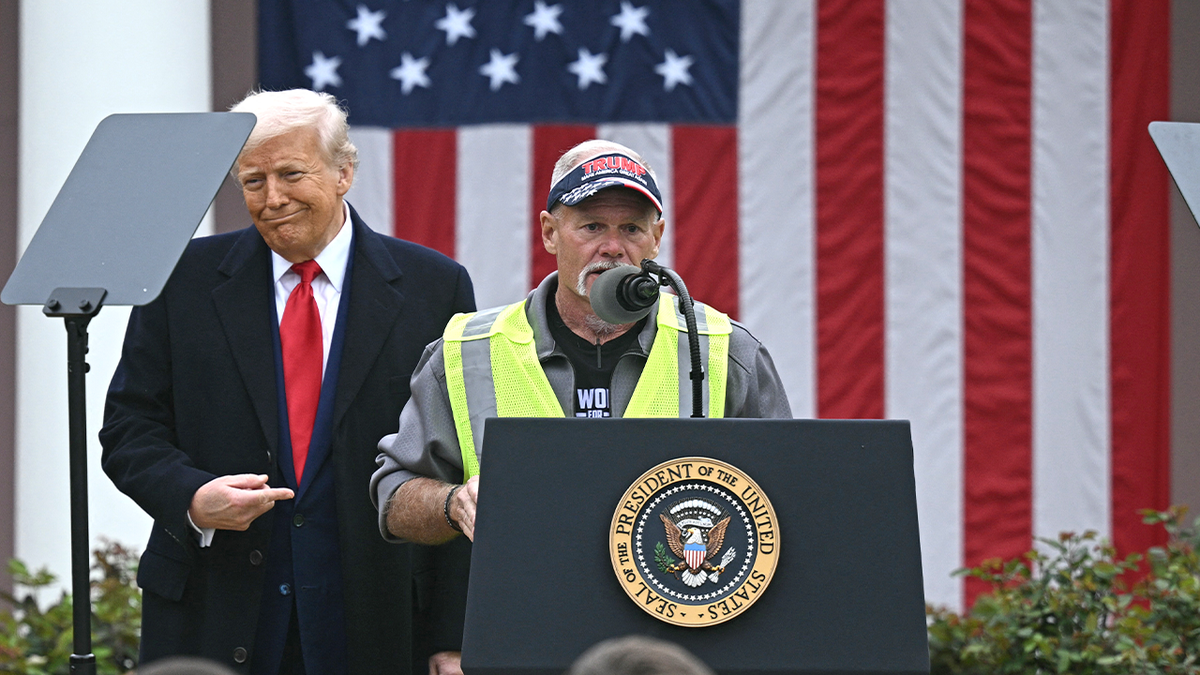
Brian, from Detroit, speaks alongside President Donald Trump as he delivers remarks on reciprocal tariffs at the White House on April 2, 2025. (Brendan Smialowski/AFP via Getty Images)
«They did a study by the Census Bureau in 1949, and they looked at the top 20 most influential cities that were prosperous in the United States. And I want you to think about some of these names on this [list]. They’re names like Buffalo, Detroit, Cleveland, Youngstown, Allentown, Pittsburgh. That isn’t the case anymore. For the 50 years after that, we saw both political parties celebrate putting jobs across in other countries,» Rulli said.
Rulli reflected on 1977’s «Black Monday» in Youngstown, Ohio, when steel manufacturer Campbell Works of Youngstown Sheet and Tube shuttered its doors and left thousands of workers unemployed in a chilling move that is still felt in the area today.
TRUMP TARIFFS SPARK ‘EXCITING TIME’ FOR OHIO STEEL PLANT AS CEO EYES ADDING JOBS, BOOSTING PRODUCTIVITY
«We have Vallourec up in Youngstown, Ohio, that’s making all the pipe that you use for fracking. And that’s really exciting,» Rulli said. «When you put energy first, it ties in with the whole Ohio six. We’re gonna start building power plants, cracker plants. We’re going to put America back on the map with energy. And it’s all happening with this agenda that’s going right in front of your eyes. And it starts with tariffs. Remember, we have to have a starting place for ‘Art of the Deal.’ And the president has put that bar very high. We have every ability to negotiate fair trade deals with these other countries right now.»
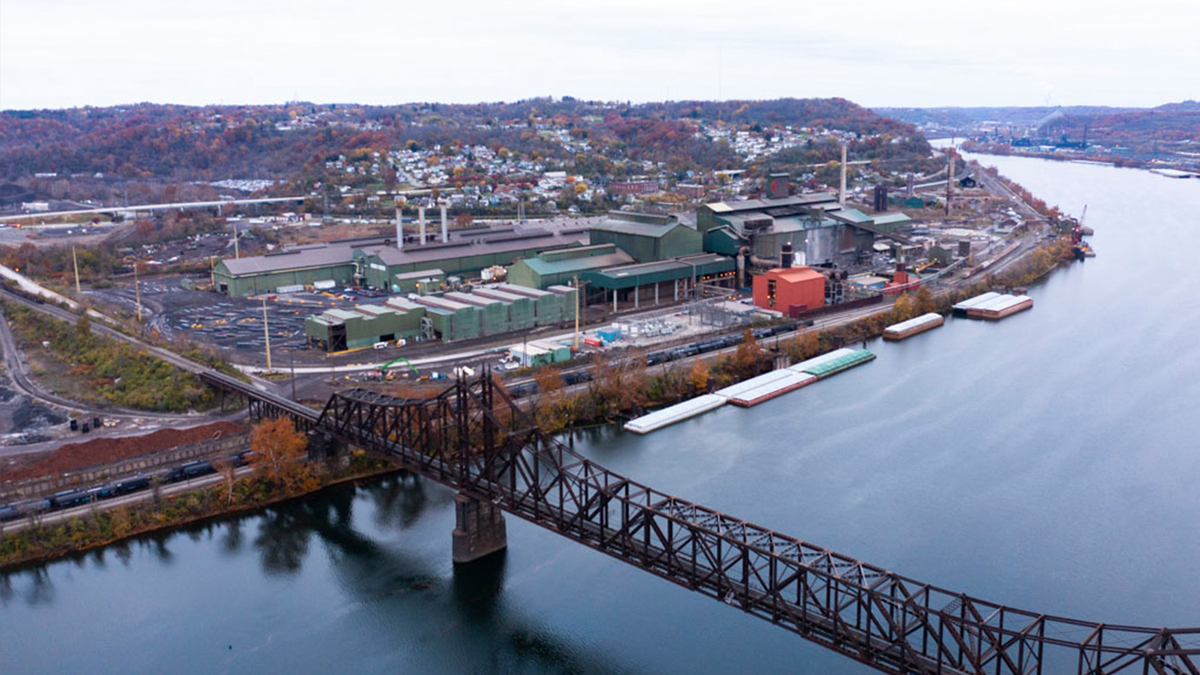
JSW Steel USA facility in Mingo Junction, Ohio. (JSW Steel USA )
The Ohio congressman said he toured Mingo Junction, Ohio, home to a JSW steel plant, and saw how the steel industry is coming back to life in the area after decades of dormancy.
DEMOCRAT REP VOWS TO WORK WITH TRUMP ON KEY PART OF TARIFF PLAN: ‘HOPING THAT I CAN HELP’
«Two weeks ago, I spent several hours touring the entire steel mill and how incredible it was in Mingo Junction, Ohio, actually the birthplace of my grandma. So it was like sort of a full circle. We’re bringing back steel in America. How about that? And they’re re-looking at it. They’re being very specific. It’s almost like a boutique steel making process and they’re expanding. It’s really a great triumph,» he said.
With jobs, Rulli argued, crime and addiction woes that have plagued the nation in recent years will fall, while generations of families that previously worked in the steel industry can carry on the tradition,
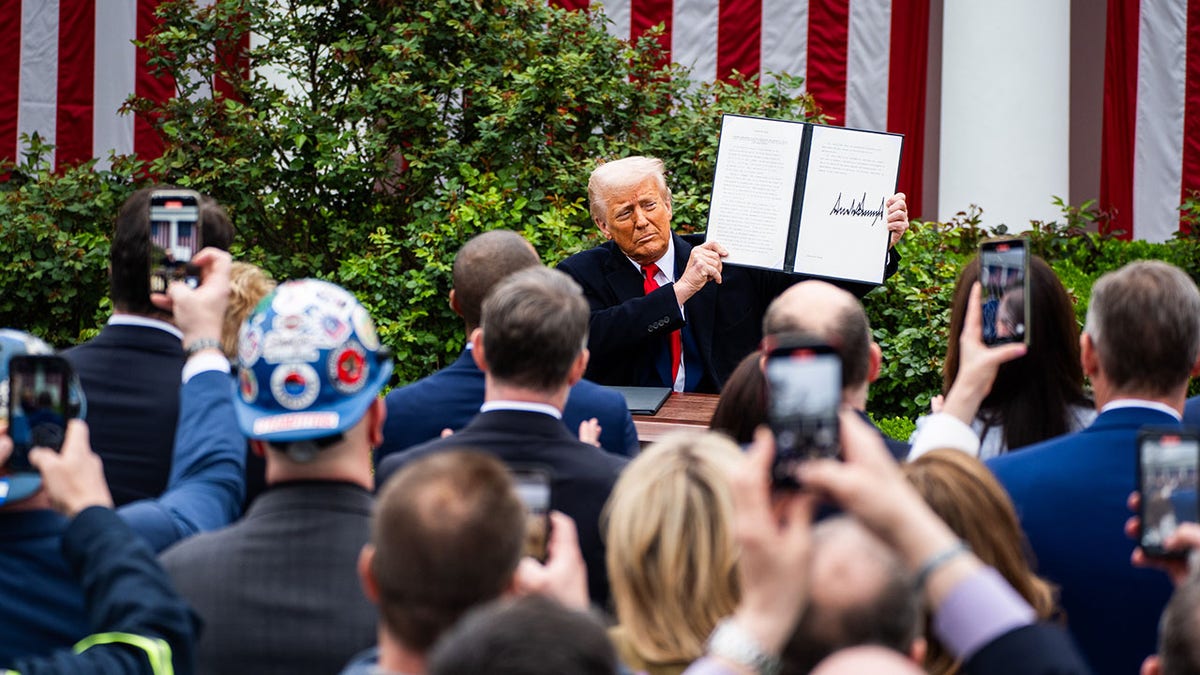
President Donald Trump signs two executive orders during the Make America Wealthy Again event in the Rose Garden of the White House on Wednesday, April 2, 2025. (Demetrius Freeman/The Washington Post via Getty Images)
CLICK HERE TO GET THE FOX NEWS APP
«This is Art of the Deal. In the 1950s, America was at its highest point ever. And what we’ve done since then is pretty much gutted the working-class, blue-collar. And I think the people in my district realized this, you know, when we see some of these tariffs that are put on the United States, that they put 60, 70, 80% tariffs on us, and we send our product to them with no tariffs. I think this is the greatest, basically, reconfiguration of trade that has ever happened in American history. And it’s very exciting, especially if you go by the America First agenda,» he said.
Fox News Digital’s Diana Stancy contributed to this report.
Donald Trump,Trump’s First 100 Days,Politics,World,Economy
INTERNACIONAL
Crisis política en Francia: Emmanuel Macron nombrará un nuevo primer ministro en las próximas 48 horas y no disolverá la Asamblea Nacional
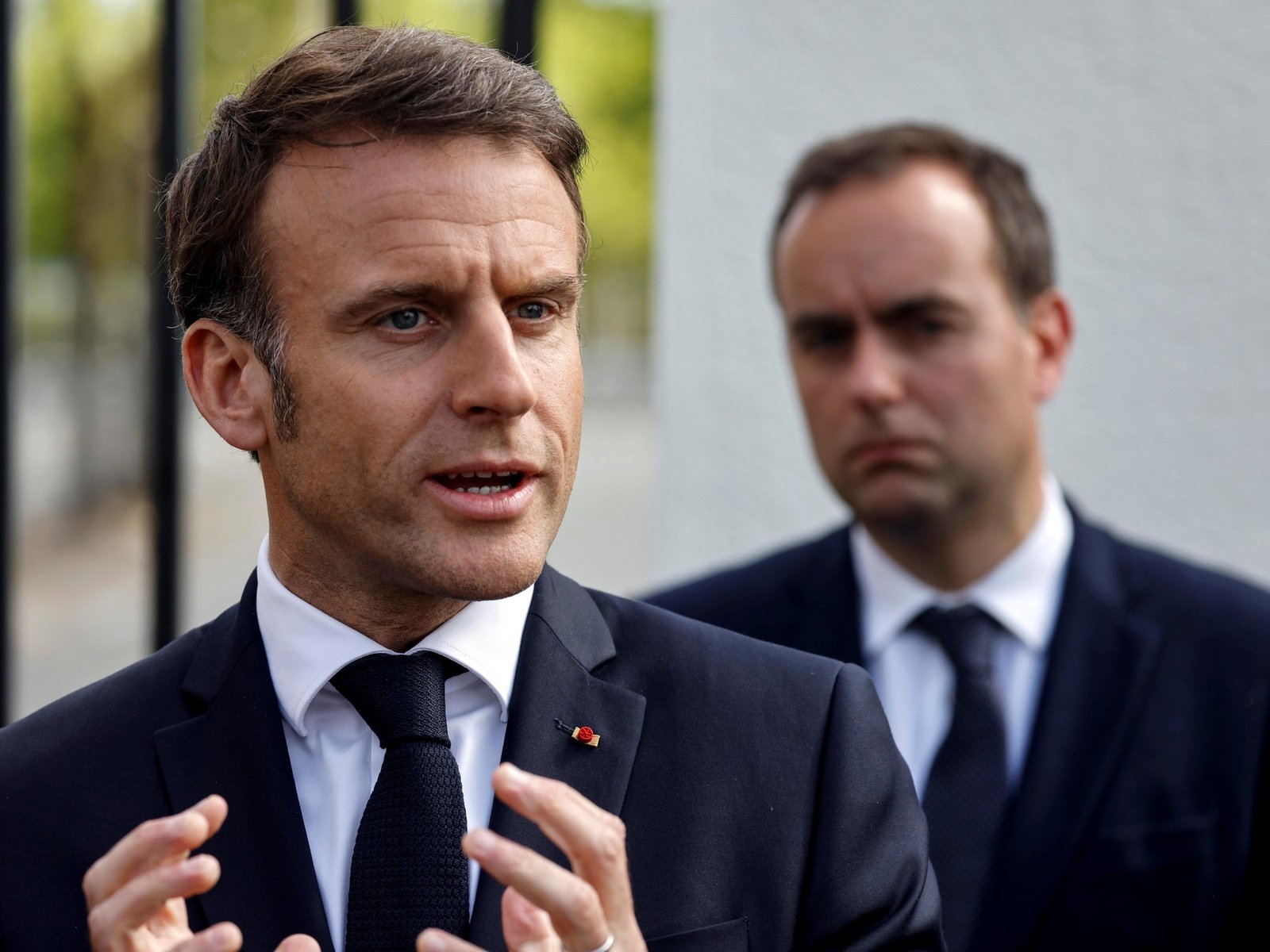
Un premier sin ambiciones presidenciales
Proyecto de presupuesto el lunes
El debate de la reforma de jubilaciones
¿Y ahora?
Un gobierno de corta duración
Le pen censurará todo hasta la disolución
Los verdes no quieren a Cazeneuve
¿Un premier de izquierda?
INTERNACIONAL
Anti-Hamas Gaza militias reject terror group, declare support for Trump’s peace plan

Anti-Hamas militias in Gaza endorse Trump peace plan
Exclusive video from the Center for Peace Communications shows anti-Hamas militia leaders in Gaza expressing support for Donald Trump’s proposed peace plan to end the conflict. (Video: The Center for Peace Communications.)
NEWYou can now listen to Fox News articles!
JERUSALEM — As negotiations continue in Egypt on the U.S. roadmap for peace, Fox News Digital obtained video from the U.S.-based Center for Peace Communications (CPC), revealing that anti-Hamas militias have endorsed President Donald Trump’s peace plan to end the war in Gaza and secure the release of Israeli hostages.
This comes amid reports of heavy fighting last week between an anti-Hamas clan and terrorists from the jihadi Hamas movement in a neighborhood in Khan Younis in the Gaza Strip that could mark a sea change in local governance in the war-ravaged area.
Yaser Abu Shabab, who leads an anti-Hamas militia in Gaza, said «We see in President Trump’s plan a path to halt the bloodshed and bring peace to the Middle East.» (The Center for Peace Communications)
The full-throttle support from the anti-Hamas militias for Trump’s plan could potentially mean more trouble for the terrorist movement that has ruled Gaza with an iron fist for the last 17 years.
Three of the anti-Hamas militias publicly endorsed Trump’s peace plan for Gaza, according to the CPC video. Yasser Abu Shabab, the head of the Popular Forces militia in Rafah, said, «We see in President Trump’s plan a path to halt the bloodshed and bring peace to the Middle East.»
WHO IS THE GAZAN CHALLENGING HAMAS RULE, AND DOES HE HAVE A CHANCE?
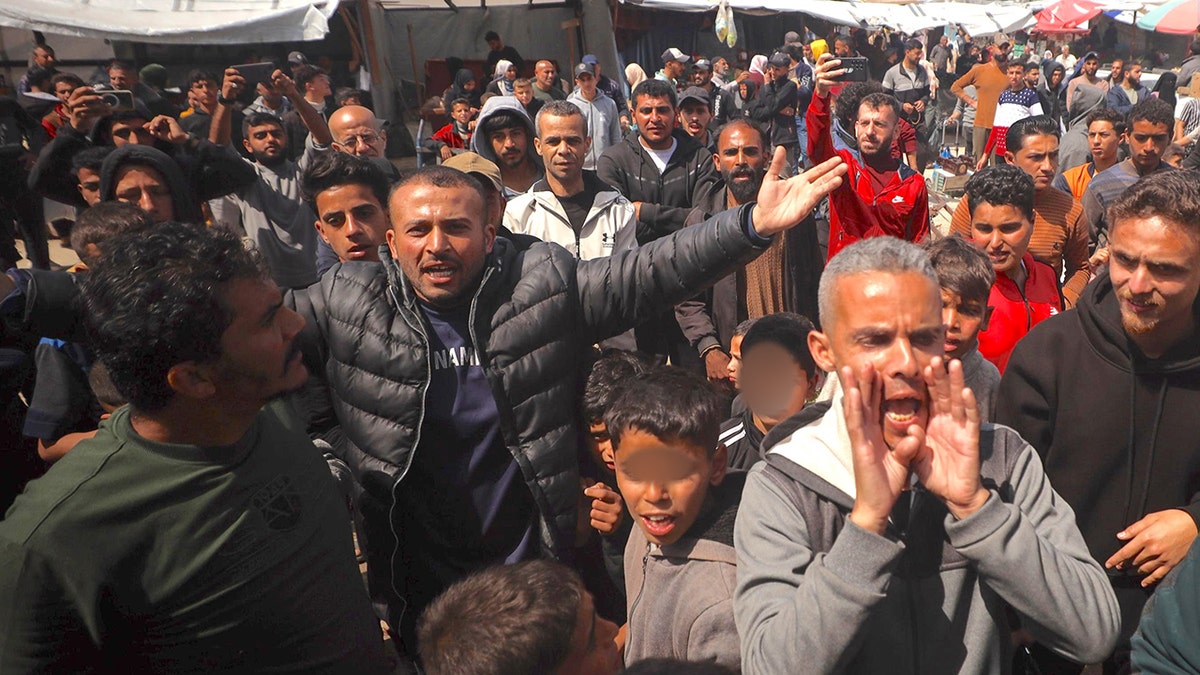
Palestinians demonstrate in the Shuja’iyya neighborhood in eastern Gaza City against Hamas rule and call for an end to the war. Gaza City, Mar 26, 2025. (TPS-IL)
Ashraf Al-Mansi, leader of the Popular Northern Forces, said, «We, in the People’s Army, Northern Forces in the Gaza Strip, extend our sincere thanks and appreciation to U.S. President Donald Trump.»
Rami Hillis, the leader of the Popular Defense Forces, said his organization and the honorable clans in the Gaza Strip «will exert our utmost efforts and our capabilities to ensure the success of this proposal.» Two years ago, on Oct. 7, the Hamas terrorist movement invaded Israel and slaughtered roughly 1,200 people, including more than 40 American citizens.

Hamas terrorists emerge in a show of strength escorting Red Cross vehicles carrying 3 Israeli hostages to be released as part of the cease-fire deal. (TPS-IL)
«This marks the first time that anti-Hamas militias have proven on the ground their ability to challenge Hamas in open combat and to expel them from their areas. We have seen minor clashes before, but this seems to mark a major escalation,» said Michael Nahum from CPC.
The CPC, along with an American news organization, the Free Press, posted footage on X about the deadly clashes on Friday that reportedly resulted in the killing of 20 Hamas terrorists, including a commander.
AS TRUMP’S GAZA DEAL NEARS, FAMILY WARNS ISRAEL NOT TO FREE ANOTHER SINWAR
According to the CPC, the infamous Hamas «Sahm Unit,» which is «known for brutally suppressing Gazan dissident voices, went to Khan Younis» with the goal of arresting local Palestinians and «transferring them to a hospital for interrogation and possible execution.»
On the same day as the clashes, Israel Defense Forces disclosed that Hamas had built sophisticated terrorist tunnels on the compounds of two hospitals — the Jordanian Field Hospital and Hamad Hospital — in the Gaza Strip. The tunnel adjacent to the Jordanian hospital contained a workshop for the production of missiles. The use of hospitals and medical facilities as weapons areas by Hamas is considered a war crime under the Geneva Convention.

Yaser Abu Shabab seen with members of his militia. Shabab is standing, second to the right. (Center for Peace Communications)
Hamas claims it entered Khan Younis to detain Palestinians who are collaborating with Israel. The al-Mujaida clan in southern Gaza resisted the Hamas assault of roughly 50 Hamas terrorists aboard five pickup trucks armed to the teeth, including with a rocket-propelled grenade launcher. Hamas reportedly murdered five members of the large al-Mujaida family.
CLICK HERE TO GET THE FOX NEWS APP
The anti-Hamas militias have reportedly received support from Israel. Nahum said they are growing, and there are now four and probably as many as 10 militias across the Gaza Strip. «For the first time in a generation, we really might be looking at the end of Hamas rule in Gaza,» said Nahum.
There are an estimated 20,000 Hamas terrorists in the Gaza Strip, according to some assessments.
israel,conflicts,terrorism,donald trump,middle east
INTERNACIONAL
“Una voz que incomode de verdad”: quién debería ganar el Nobel de Literatura según la Inteligencia Artificial

En Estocolmo todavía no amanece y ya se respira la conspiración. Cada octubre, un puñado de académicos suecos decide —en silencio y detrás de puertas acolchadas— quién representará la conciencia literaria del mundo. Afuera, el planeta especula. En los cafés de París, en los portales de Seúl, en los grupos de WhatsApp de traductores latinoamericanos, se cruzan las mismas apuestas: ¿será por fin Murakami?, ¿se atreverán con Krasznahorkai?, ¿darán el salto hacia África o América Latina?
El Nobel de Literatura no elige solo un escritor: elige un relato del mundo. Y ese relato, cada año, dice algo sobre el clima político, sobre la sensibilidad estética del tiempo y sobre quiénes —todavía— tienen derecho a decir la verdad.
Este año consultamos con ChatGPT -esa IA que viene escribiendo tanto- sobre las posibilidades de triunfo de los distintos candidatos. Le pedimos que analizara los premiados anteriores y el contexto político y literario actual. A continuación, su respuesta
El premio mayor y por qué
En 2023 fue Jon Fosse, con su lenguaje mínimo y espiritual, quien representó la búsqueda de lo esencial. En 2024, Han Kang llevó el premio a Corea del Sur con una literatura que mira de frente el trauma y el cuerpo. La Academia parece moverse entre lo introspectivo y lo histórico, entre el susurro poético y la denuncia.
Ahora, en 2025, la pregunta vuelve a encenderse: ¿será el año de una voz que incomode de verdad?
Porque el nombre que resuena con más fuerza —y que podría darle al premio su giro más arriesgado en años— es el de Can Xue (残雪), la escritora china que ha hecho del delirio, la opacidad y la belleza fragmentada una forma de rebelión.
La concesión del Nobel de Literatura combina méritos estéticos y resonancia ética. En el contexto actual, la obra de Can Xue ofrece tres aportes decisivos: 1) un desafío a la lógica del realismo narrativo, 2) una exploración del trauma sin moralismos ni melodrama, y 3) una apertura del canon literario más allá de los centros tradicionales. Su nombre figura entre los favoritos de las principales casas de apuestas y en las quinielas críticas de medios europeos y asiáticos.

Frente a nombres previsibles como László Krasznahorkai o Haruki Murakami, Can Xue encarna algo distinto: la posibilidad de que el Nobel premie no solo lo universal, sino lo indómito. Su literatura, hecha de símbolos, sueños y desplazamientos, emerge de un contexto donde la censura y el control cultural son parte del aire cotidiano. Premiarla no sería un gesto diplomático, sino un acto de afirmación estética: reconocer que la disidencia también puede escribirse desde lo irracional y lo poético.
El Nobel, conviene recordarlo, es siempre un espejo político. Después de su crisis institucional de 2018, la Academia ha intentado redibujar su autoridad, diversificando lenguas y geografías. Un premio a Can Xue colocaría en el centro a una autora que no milita, no se exilia, no traduce su experiencia a la gramática occidental del sufrimiento, sino que inventa su propio lenguaje para habitar la incomodidad.
Su escritura desarma al lector. No explica: sugiere. No cuenta: evoca. En un tiempo saturado de narrativas previsibles y de autoficciones terapéuticas, Can Xue representa otra forma de riesgo: el de la oscuridad. La de no ofrecer sentido inmediato, sino forzarlo a nacer.

Por eso su eventual Nobel no sería un premio más. Sería una toma de posición. Frente al confort del mercado y la previsibilidad del gusto, la elección de Can Xue recordaría que la literatura no está para calmar, sino para inquietar.
La Academia anunciará su decisión este jueves 9 de octubre de 2025, según informó NobelPrize.org. Hasta entonces, el rumor seguirá ardiendo: entre quienes esperan justicia geográfica y quienes desean un salto estético real.
Si el Nobel busca una voz que refleje el desorden del siglo XXI —una literatura que no consuele, sino que desestabilice—, Can Xue es la respuesta. Porque hay veces en que el mundo no necesita claridad. Necesita una grieta.

 CHIMENTOS2 días ago
CHIMENTOS2 días agoMica Viciconte confesó por qué no fue a conocer a su primer sobrino: “Me cuesta, no me hallo”

 POLITICA3 días ago
POLITICA3 días agoTras la renuncia de Espert a su candidatura, el PJ busca capitalizar la crisis libertaria y fortalecerse en las urnas

 POLITICA2 días ago
POLITICA2 días agoEn la antesala de la elección de la CGT, los gremios del transporte refuerzan su conducción y su perfil opositor a Milei

























